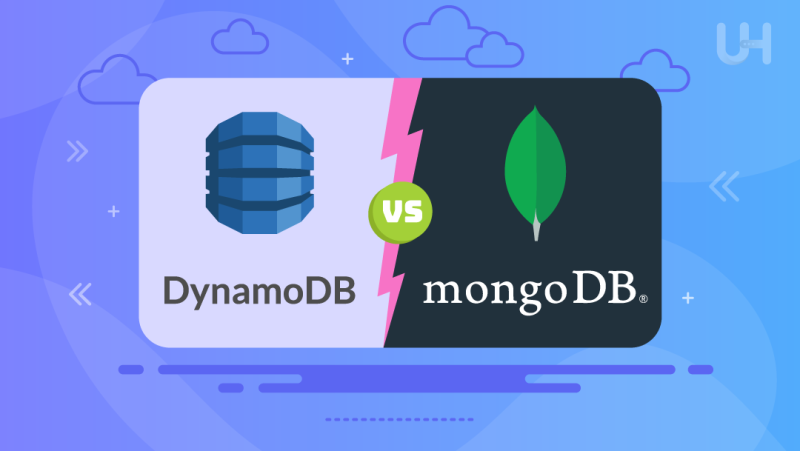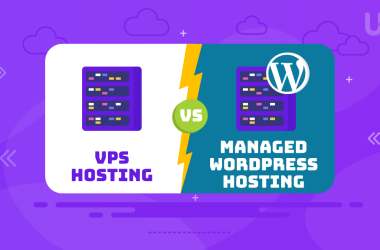NoSQL databases represent a considerable chunk of infrastructure necessary to handle large velocities of data in modern data management. The two well-recognized players in this field, DynamoDB vs MongoDB, have conquered the market. While both databases serve similar functions in terms of flexible schema designs and horizontal scalability, they differ in architecture, performance model, and use cases. The right choice might be very important based on your application needs, operational scale, and budget considerations.
In this article, we will explore in depth the major features, advantages, and disadvantages of DynamoDB vs MongoDB to help you decide which one is more suited for your needs.
What is DynamoDB?
DynamoDB is a fully managed AWS NoSQL database service designed for always highly available and scalable applications. Because of DynamoDB’s serverless platform, developers do not have to manage hardware provisioning, clusters, or routine maintenance. Its basic purpose is to yield low-latency responses, making it highly suitable for applications requiring fast and constant performance.
DynamoDB adheres to the key-value and document store data model with a flexible schema design. It assures data consistency, using both eventual and strongly consistent reads. Besides, DynamoDB integrates with other AWS services and provides point-in-time recovery, encryption, and auto scaling, extending its reliability and usability for various applications.
Pros
- Fully Managed: You won’t need to worry about fully dedicated server management, scaling, or patching; AWS handles all of this.
- Serverless: It automatically scales with your workload and requires no administration by you.
- High Performance: Due to its distributed architecture, the framework gives low-latency responses at even large scales.
- Integration: Easy integration with AWS services such as Lambda, S3, and CloudWatch.
- Data Security: Data encryption at rest and transit; fine-grained access control with IAM.
- Backup & Restore: DynamoDB provides automated backups and point-in-time recovery to protect data.
Cons
- Cost: DynamoDB can be very expensive at scale. The worst-case usage would require provisioned throughput with high demand.
- Complex Querying: Less querying capability compared with document-based databases like MongoDB.
- Vendor Lock-in: Tied tightly to AWS, migration to other cloud providers becomes more complex.
- Learning Curve: The design of schemas in DynamoDB involves partition keys and sort keys and, therefore, requires careful deliberation.
What is MongoDB?
MongoDB is a widely used open-source NoSQL database that relies on a document-oriented data model. MongoDB stores data in flexible, JSON-like BSON documents because applications that require complex, hierarchical data structures may call upon it. With MongoDB, dynamic schema design allows for inconsistencies in structure and size without the need for predefined schemas; hence, it is ideal in rapid development environments.
MongoDB provides high scalability and thus supports sharding and replica sets. It can also deploy on-premise, in a private cloud, or on various cloud providers. The robust ad-hoc querying and indexing capabilities make MongoDB suitable and flexible for complex read/write applications.
Pros
- Flexible Schema: The document model natively supports dynamic schema, making changing your database easy.
- Rich query language: MongoDB fully supports complicated queries with indexing and aggregation, which allows for flexible data retrieval methods.
- Horizontal Scalability: MongoDB scales horizontally through sharding and replica sets, which allow it to distribute data across multiple servers.
- Cross-platform: MongoDB supports various cloud providers for operations, whether on-cloud or on-premise.
- Community & Ecosystem: Committed community support, with the most number of plugins, drivers, and tools available.
Cons
- Performance at Scale: Indeed, MongoDB scales well, but if not optimized properly, decays in performance manifest when handling larger datasets.
- Operational Overhead: Sharding, replica sets, and backup management all require experience and add complexity.
- Costly to Scale: Running highly available and fault-tolerant MongoDB can be very expensive, especially on cloud-hosted solutions like MongoDB Atlas.
- Consistency Issues: By design, MongoDB sacrifices some consistency for availability; thus, it can’t avoid eventually having a consistent problem in some use cases.
Supercharge Your NoSQL Databases Today!
Are you looking for the perfect hosting solution to run your DynamoDB or MongoDB databases efficiently? UltaHost VPS Hosting offers the power, flexibility, and scalability to handle high-performance workloads for your NoSQL databases.
MongoDB vs DynamoDB: Differences
While DynamoDB and MongoDB are both capable NoSQL databases, they are really quite different in architecture, querying, and cases of use. Key differences between them may be pointed out as under:
| Feature | DynamoDB | MongoDB |
| Data Model | Key-value and document store | Document-based (BSON/JSON) |
| Schema | Schema-less, but relies heavily on partition and sort keys | Schema-less, with dynamic and flexible design |
| Performance | Low-latency for high-throughput workloads | Performance can vary based on optimization |
| Query Language | Simple queries using primary keys and indexes | Rich query language with complex filtering |
| Scalability | Automatically scales with demand (serverless) | Manual sharding and replica sets for scaling |
| Consistency | Offers both eventual and strong consistency | Eventual consistency by default, with options for strict consistency |
| Deployment | Tied to AWS (serverless, fully managed) | Cross-platform (on-premises, cloud-agnostic) |
| Cost Structure | Pay-per-request or provisioned throughput | Costs vary based on deployment model |
| Backup & Restore | Built-in automatic backup and point-in-time recovery | Requires manual backup management or third-party solutions |
DynamoDB vs MongoDB: Use Cases

The choice between DynamoDB vs MongoDB depends on your application’s needs, workload, and the environment in which it will be. Now, let’s examine the highly specific use cases where each database does the trick.
DynamoDB
- Real-time Applications: It’s perfectly valid for gaming leaderboards, IoT applications, and real-time bidding systems where low latency and high availability are key.
- Serverless Architecture: Best for applications running in AWS Lambda or other serverless architectures because of its fluid scalability and direct integration with AWS services.
- E-commerce Platforms: DynamoDB manages shopping carts, session data, and other high-volume transactional data, especially when paired with a reliable eCommerce hosting server, to ensure smooth, scalable operations.
- Mobile backends: DynamoDB is fully managed. It’s great for powering mobile applications, including authentication and user profile management.
- Multi-Region Deployments: DynamoDB supports global tables, making maintaining highly available applications across multiple AWS regions easy.
MongoDB
- Content Management Systems: MongoDB’s flexible schema is ideal for managing huge bulks of unstructured data in applications like blogs, wikis, and content management systems.
- Big Data Applications: MongoDB is ready for use in cases with massive data volumes, which would mean complex queries, analytics, and real-time data processing.
- IoT and Sensor Data: MongoDB’s ability to store time-series data and provide real-time analytics makes it perfect for IoT applications.
- Social Networks: For social media, MongoDB would be a good choice due to its capability to tackle complicated relationships and dynamic data structures. This makes it a strong option when combined with efficient media hosting solutions for handling large volumes of user-generated content and media files.
- Cross-Cloud Applications: MongoDB’s portability is an undeniable advantage if you have to leverage millions of dollars of flexibility across multiple cloud providers or on-premise deployments.
Conclusion
The choice between DynamoDB and MongoDB comes down to the proper use case, application architecture, and finally, budget. DynamoDB is a feature set designed to be fully managed and serverless for an AWS-centric environment that needs low latency and auto-scaling. MongoDB offers much more flexibility because of its document model and powerful querying capabilities. That makes it suitable for complex applications requiring multi-cloud or on-premises deployment options.
Both are stellar databases for modern applications. Knowing the differences will finally help you make an informed decision based on your unique needs.
For those who need dedicated resources and top-tier performance for their NoSQL databases, UltaHost’s dedicated server hosting provides unmatched power and reliability. Experience seamless database management and optimal performance.
FAQ
What’s the main difference between DynamoDB vs MongoDB?
DynamoDB is AWS-managed and serverless, while MongoDB is open-source and document-based.
Which database offers better scalability, DynamoDB or MongoDB?
DynamoDB offers automatic, serverless scaling, while MongoDB requires manual configuration through sharding and replica sets for scalability.
Is DynamoDB or MongoDB better for real-time applications?
Yes, DynamoDB is often preferred for real-time applications due to its low latency responses and seamless integration with AWS services.
Can MongoDB handle complex queries better than DynamoDB?
Yes, MongoDB has a richer query language and is better suited for handling complex queries compared to DynamoDB.
Which is more cost-effective at scale?
MongoDB can be cheaper if optimized, while DynamoDB may get costly with high workloads.
Can MongoDB run on multiple clouds?
Yes, MongoDB supports multi-cloud and on-premises deployments.
Which is better for eCommerce platforms?
DynamoDB is great for eCommerce, especially with an eCommerce hosting server.










